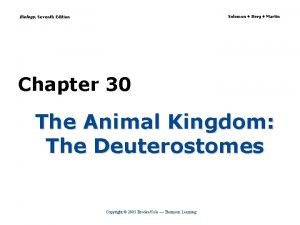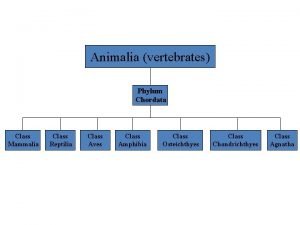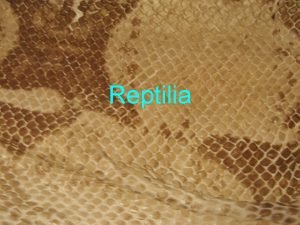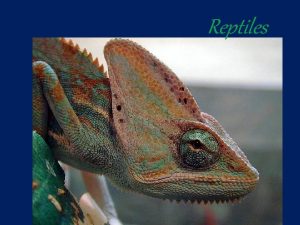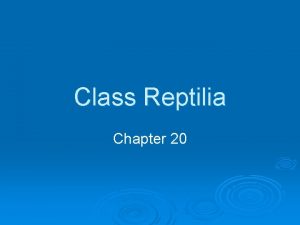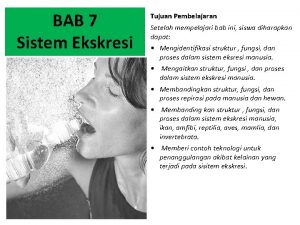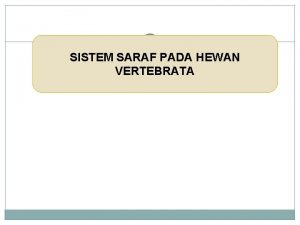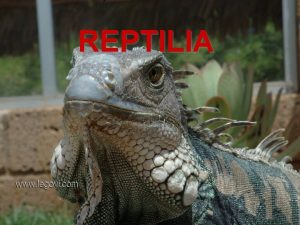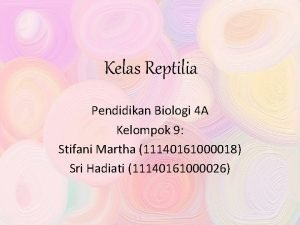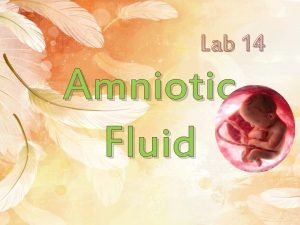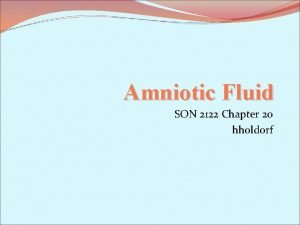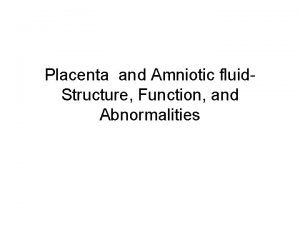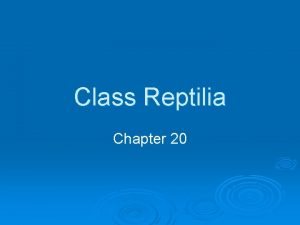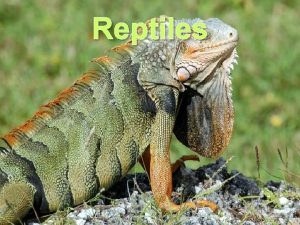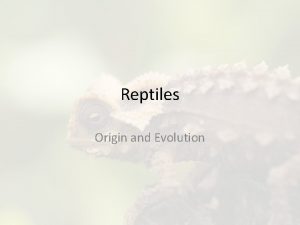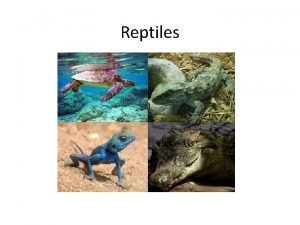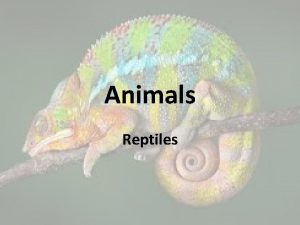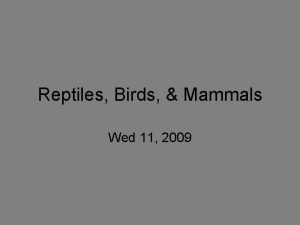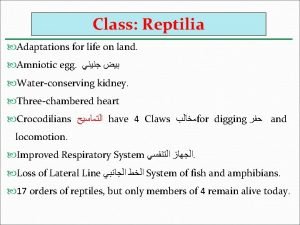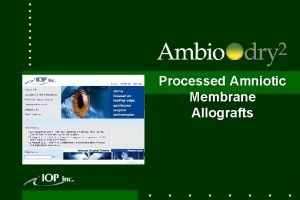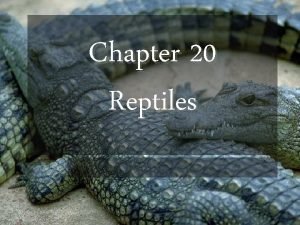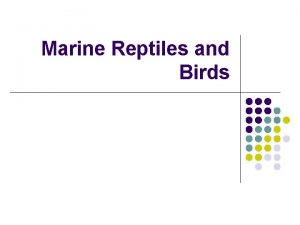CLASS REPTILIA CLASS REPTILIA All reptiles produce amniotic



















- Slides: 19

CLASS REPTILIA

CLASS REPTILIA • All reptiles produce amniotic eggs in which the embryo is surrounded by two protective membranes. The yolk sac provides food for the embryo.

CLASS REPTILIA • Reptiles conserve water by having a dry, scaly watertight skin and by eliminating their nitrogenous wastes as uric acid.

CLASS REPTILIA • Lizards, turtles, snakes, and tuataras have a heart with two atria and one partially divided ventricle. Crocodiles have a fourchambered heart, as mammals do. • Reptiles inflate their lungs by expanding the ribs, drawing in air by decreasing abdominal pressure.

CLASS REPTILIA • A reptile’s brain is about the same size as the brain of an amphibian, but it has a much larger cerebrum. • The Jacobson’s organ detects chemicals picked up by the tongue.

CLASS REPTILIA • All living reptiles are ectotherms. Ectotherms warm their bodies mainly by absorbing heat from their surroundings. • Reptiles can keep their body temperature fairly constant by moving into and out of the sun.

CLASS REPTILIA • Ectotherms require very little food, but they cannot live in cold climates or be active when temperatures are low.

CLASS REPTILIA • Many reptiles lay shelled eggs. This is called oviparity.

CLASS REPTILIA • Some species transfer nutrients and oxygen to the developing embryos through a placenta. This strategy is called viviparity.

CLASS REPTILIA • Some species retain the eggs inside the female’s body. This is called ovoviviparity.

CLASS REPTILIA • 1. 2. 3. 4. Familiar living reptiles are classified into four orders: Chelonia Crocodilia Squamata Rhynchocephalia

CLASS REPTILIA • All turtles (order Chelonia) Chelonia have a shell composed of bony plates. The vertebrae and ribs are fused to the interior surface of the shell. Turtles are mainly aquatic, while tortoises are terrestrial. All species lay eggs.

CLASS REPTILIA • Crocodilians (order Crocodilia) Crocodilia are large aquatic or semiaquatic carnivores. This group includes crocodiles, alligators, caimans, and the gavial. They eat whatever they want to eat.

CLASS REPTILIA • Lizards and snakes belong to the largest order of reptiles (order Squamata). Squamata Most lizards are small, agile, and feed on insects.

CLASS REPTILIA • Lizards can detach their tail (autotomy) in order to confuse a predator.

CLASS REPTILIA • Some snakes kill their prey by constriction, suffocating it with their coiled body. Some species kill by injecting venom. Snakes can swallow objects larger than their head because they have a very flexible skull.

CLASS REPTILIA • Rhynchocephalia (RING-koe-suh-FAYlee-uh) is an ancient order that contains the tuataras. • Today tuataras inhabit only a few small islands of New Zealand.

CLASS REPTILIA • The word tuatara means “spiny crest” in the Maori language. Tuataras resemble large lizards and grow to about 60 cm (24 in. ) in length. • They eat insects, worms, and other small animals.

• I like turtles.
 Glucurie
Glucurie Phylum chordata class reptilia
Phylum chordata class reptilia Sistem reproduksi reptilia
Sistem reproduksi reptilia Characteristics of reptilia
Characteristics of reptilia Thecodonts
Thecodonts Characteristics of reptilia
Characteristics of reptilia Reptilia mengeluarkan ekskret berupa
Reptilia mengeluarkan ekskret berupa Gurat sisi
Gurat sisi Struktur tubuh reptilia
Struktur tubuh reptilia Sistem rangka pada reptil
Sistem rangka pada reptil Oligohydramnios
Oligohydramnios Hydrochephalis
Hydrochephalis Normal amniotic fluid
Normal amniotic fluid Seed coat
Seed coat Amniotic fluid index
Amniotic fluid index Color of amniotic fluid
Color of amniotic fluid Color of amniotic fluid
Color of amniotic fluid Structure of placenta ppt
Structure of placenta ppt Amniotic fluid embolism
Amniotic fluid embolism Stage development
Stage development
